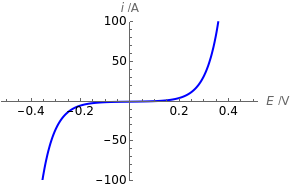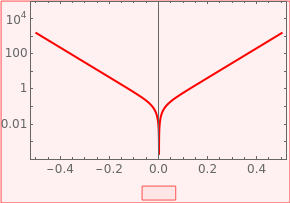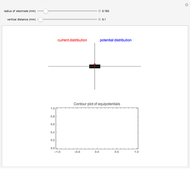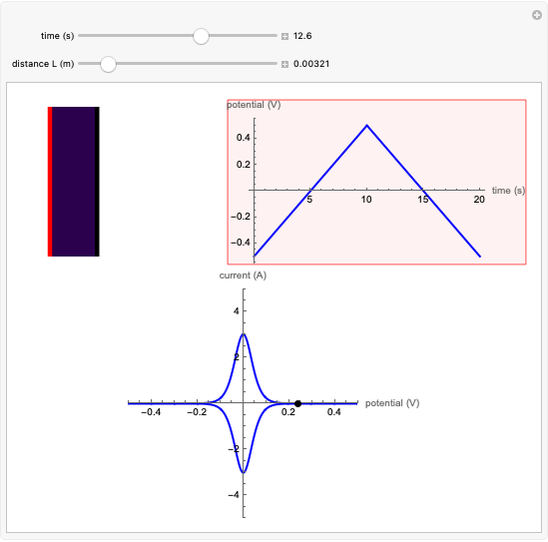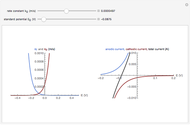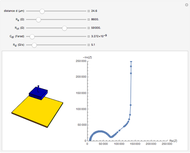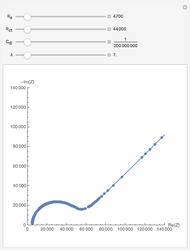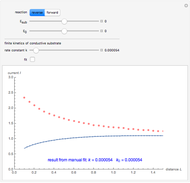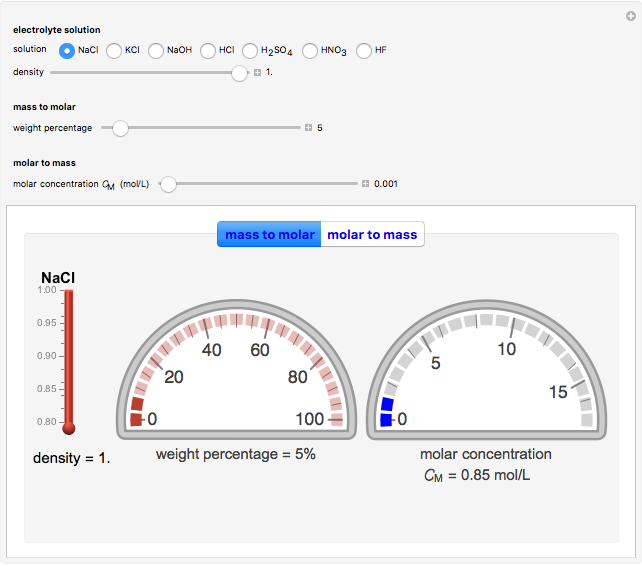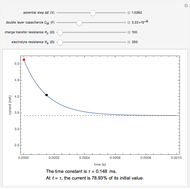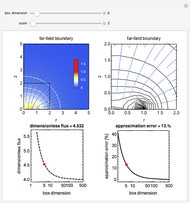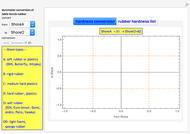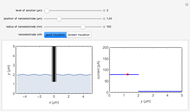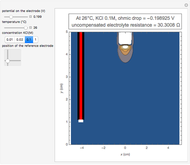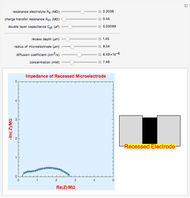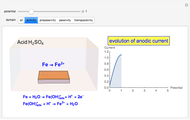Tafel Curve in Electrochemistry

Requires a Wolfram Notebook System
Interact on desktop, mobile and cloud with the free Wolfram Player or other Wolfram Language products.
The Tafel curve is widely used in electrochemistry, especially in the study of corrosion. Using the Tafel curve one can determine the corrosion potential  or open circuit potential. The coefficient of charge transfer
or open circuit potential. The coefficient of charge transfer  can also be determined as the slope of the Tafel curve. This Demonstration shows the current-potential curve on the left and the Tafel curve,
can also be determined as the slope of the Tafel curve. This Demonstration shows the current-potential curve on the left and the Tafel curve,  on the right.
on the right.
Contributed by: Quang-Dao Trinh (June 2011)
Open content licensed under CC BY-NC-SA
Snapshots
Details
The current-potential curve on the left obeys the Butler–Volmer equation for a kinetic-controlled reaction,
 ,
,
where  is the charge transfer coefficient,
is the charge transfer coefficient,  is the number of electrons transferred,
is the number of electrons transferred,  is Faraday's constant,
is Faraday's constant,  is temperature,
is temperature,  is the gas constant,
is the gas constant,  and
and  are the concentrations of oxidant and reductant,
are the concentrations of oxidant and reductant,  is the standard rate constant, and
is the standard rate constant, and  is the standard potential or corrosion potential
is the standard potential or corrosion potential  .
.
The potential curve on the right is the Tafel curve.
potential curve on the right is the Tafel curve.
For high overpotential  ,
,
 .
.
So the anodic slope is  ; as
; as  increases, this slope decreases.
increases, this slope decreases.
For large negative potential  ,
,
 .
.
Thus the absolute value of cathodic slope is  ; as
; as  increases, the slope increases.
increases, the slope increases.
The Tafel slope can be used to calculate the charge transfer coefficient  and the corrosion potential
and the corrosion potential  .
.
Permanent Citation
